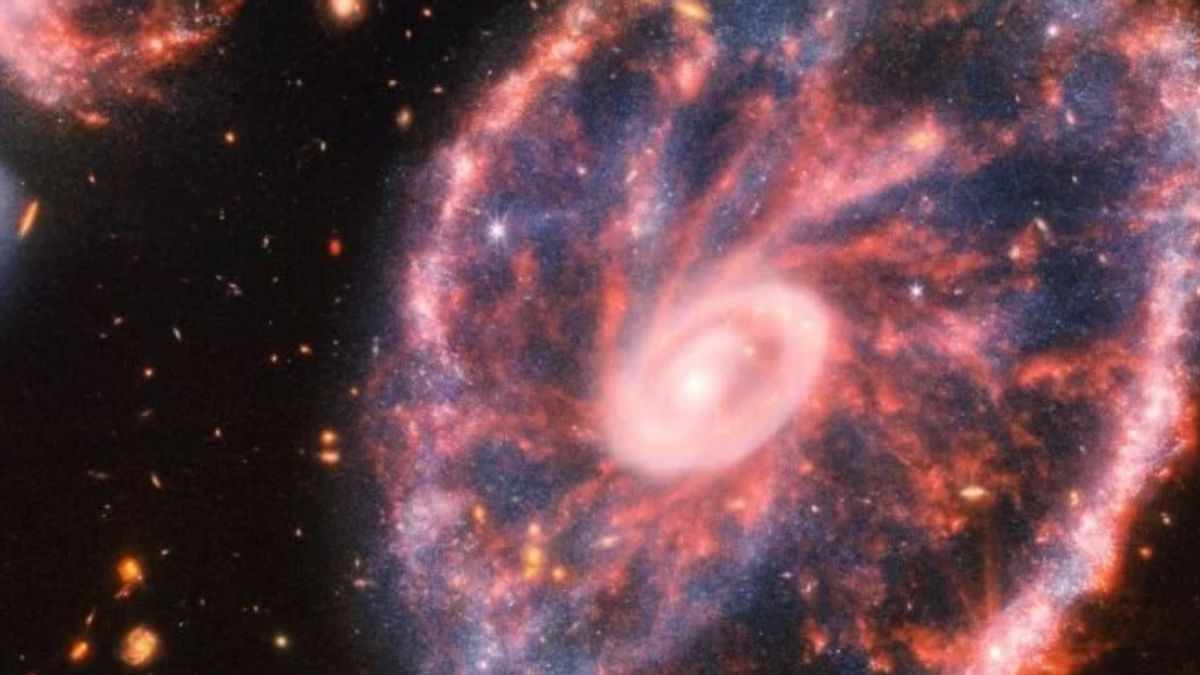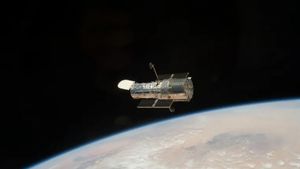
JAKARTA – The James Webb telescope has reportedly managed to capture the appearance of the Gartwheel galaxy which was released on August 2. This portrait of the galaxy is assessed in more detail and has never been captured by a telescope before.
The success of the James Webb telescope is claimed to be able to increase researchers' understanding of the star system. The Cartwheel Galaxy is a galaxy shrouded in hot dust, 500 million light years from Earth. The galaxy is considered the history of galaxy formation.
"Its (Cartwheel galaxy) appearance, like a wagon wheel, is the result of an intense event - a high-speed collision between a large spiral galaxy and a small galaxy not seen in this image," NASA representatives said in an open statement, quoted from LiveScience.
NASA also stated that the galaxy was once likely to have a spiral shape similar to the Milky Way. As a result of the collision that occurred at the center of the Cartwheel galaxy, it created two visible rings spreading from the collision site.
The bright inner ring is filled with hot dust and young star clusters, while the outer ring is home to newborn stars and supernovae, according to a statement from NASA. Some of the original spiral shapes are still visible as the lines between the two rings.
NASA got the findings based on the catch of the James Webb telescope. In fact, the James Webb telescope is not the first to capture this image of the galaxy. Previously, the Hubble telescope had captured the Cartwheel and managed to detect its stars.
The James Webb Space Telescope, which was launched on December 25, 2021, is the successor to the Hubble telescope. NASA claims the James Webb telescope can find objects 100 times fainter that Hubble cannot detect.
The English, Chinese, Japanese, Arabic, and French versions are automatically generated by the AI. So there may still be inaccuracies in translating, please always see Indonesian as our main language. (system supported by DigitalSiber.id)










